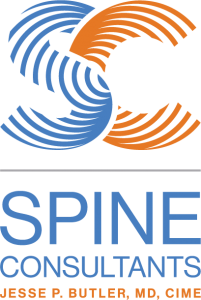Most patients with arm pain can seek relief from conservative treatments like medicine or physical therapy. A small percentage of patients may need a surgical procedure, such as a posterior cervical foraminotomy (PCF).
The procedure is performed to relieve symptoms from a pinched neck nerve. Most patients can now undergo PCF as an outpatient procedure.
What is Cervical Foraminotomy
The posterior cervical foraminotomy reduces pressure on the nerves that exit the spinal cord by enlarging the neural foramen, the area from where the nerves leave the spinal cord. This procedure can be completed in a short period with minimal damage to the tissue compared to open cervical spinal surgery.
During the procedure, a small portion of bone and joint covering the spinal nerve is cut away including any soft tissue that may compress it. In some cases, the surgeon removes a prolapsed disc. Some symptoms of neck pain can be relieved by a foraminotomy without removing a disc. Since posterior cervical foraminotomy is less invasive, there is no spinal fusion, and the recovery time is shorter.
Who is a Candidate for Cervical Foraminotomy?
Typically, this surgery is performed if there is arm pain and little or no accompanying neck pain. The most important benefit of this procedure is there is no neck fusion, preserving preserves the maximum amount of flexibility of the neck.
Surgery is usually recommended when all reasonable conservative measures have failed. In cases of significant instability or neurological problems, surgery may be the most appropriate first treatment option.
Among the most frequent neck problems that require minimally invasive posterior cervical foraminotomies is a herniated disc. Many types of neck problems can be treated with this procedure, including degenerative disc disease and spinal stenosis.
Cervical Foraminotomy Procedure
A cervical foraminotomy procedure involves the steps listed below.
Incision in the neck
To perform the surgery, the surgeon makes a 1-2 centimeter poke-hole incision on one side of the neck, directly above the level of the concerned spinal nerve. C-arm images are obtained for surgical guidance, and an operating microscope is used to magnify and illuminate the surgical field. A cannulated retractor and sleeves separate the fascia and muscle, exposing the spine’s bony roof.
The surgeon uses a high-speed drill to create a small space between the overlapping facet joints at the back of the spine. They can see the neural foramen, or nerve channels, either on the left or right side of the intervertebral disc. The surgeon may also see the herniated disc and bone spurs compressing the spinal nerve.
Removal of spinal bone and herniated disc
Using a bone-cutting tool called a Kerrison Rongeur, and a high-speed drill, the surgeon removes the bone from the posterior arch of the spine. This allows the surgeon access to the pinched nerve root and herniated disc.
With a small instrument, the surgeon checks if the nerve is free. Then the surgeon removes the thickened ligaments, bone spurs, and herniated discs. By doing so, the nerve root is freed from tension and pressure. The surgeon also checks all other surrounding areas for compression spurs or disc fragments.
Closure of the incision
The surgeon washes the wound area with antibiotic-laced sterile water and uses one to two sutures to close the layers beneath the skin. Special surgical glue can usually close the wound with no bandaging, resulting in a small scar.
Recovery After Cervical Foraminotomy
Within a few hours of the surgery, the patient can usually get out of bed and can go home on the same day. Patients are taught proper skills for getting out of bed and walking independently by physical and occupational therapists before they leave.
Patients should also avoid heavy lifting for three to four weeks following surgery. The surgeon may prescribe a soft collar for the patient and instruct them to move the neck carefully for the next two weeks to let the incision heal.
What to expect while recovering at home
After two to three weeks, the discomfort diminishes as the neck and back muscles become stronger and patients can bend and twist their necks again.
The patient can usually resume driving after a week or two. In case of pain flare-ups and needing assistance driving back home, patients should only drive for a short distance at first. When the patient is comfortable driving short distances alone, he or she can begin driving longer distances.
Within 1-2 months, patients who have had their neck strength restored appropriately with physical therapy may return to light lifting and athletic activities. Light work should be tolerated after four weeks. Typically, they are able to return to heavy work and activities within two to three months of surgery.
Cervical Foraminotomy is an Effective Treatment
The cervical foraminotomy procedure can be great for those that suffer from pain in the neck and arms to greatly improve their quality of life. Since this surgery is relatively quick and involves minimum recovery time, this is an ideal procedure for people looking for a short-term procedure with little risk. A qualified spine surgeon can help you determine if this is the right procedure for you. To schedule an appointment with Dr. Butler, complete this form.

